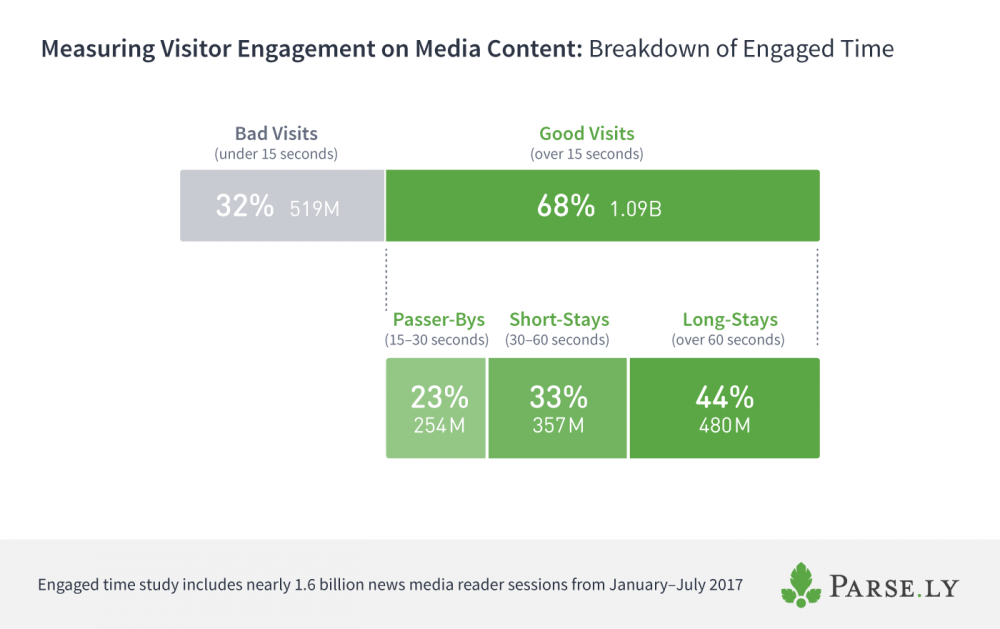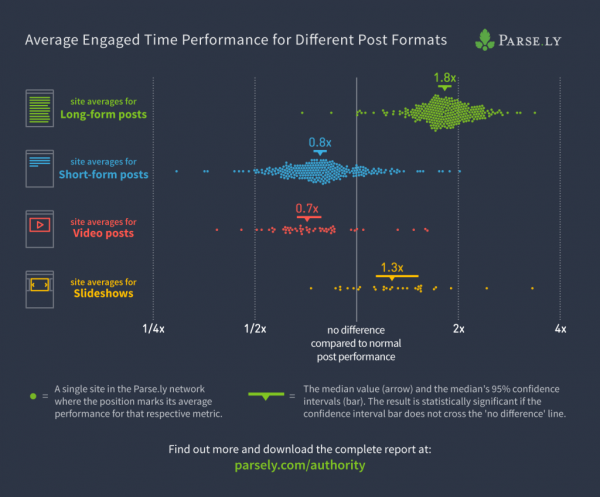Three ways to find value in engaged time

What metric best encapsulates what’s resonating with readers?
There’s no one right answer. It varies from organization to organization depending on strategic goals and usually involves a combination of metrics. But for some organizations, especially when those goals tie back to reader revenue, user experience, and content strategy, the answer is total engaged time.
“When we chose total engaged minutes, we had made a decision as a company that we wanted a driving metric that would help emphasize the loyal audience,” said Julia Turner, Editor-in-Chief at Slate.
Whether the goal is linking audience loyalty to subscriptions or understanding what content your audience responds to, engaged time can serve as a valuable benchmark. Here are examples of three questions Slate, The Intercept, and The Star can answer using engaged time as a benchmark.
Slate: What content resonates with loyal readers?
Audience loyalty translates into growing membership for Slate, making engaged time a fitting “north star” metric. In 2014, the organization launched their Slate Plus membership program. Three years later, Slate Plus was 35,000 members strong.
Engaged time became a benchmark across teams at Slate, aligning the entire organization on their goal of growing loyalty overreach. “Our deliberate shift in strategy stems from our belief that the engaged time goal uniquely aligns the priorities of readers, advertisers, and our editorial team,” said David Stern, Director of Product Development at Slate.
Slate also applied engaged time in an effort to improve ad experience on site. The dangers of maximizing ad revenue based on page views range from tendencies to clickbait to clutter pages with ads. Maximizing ad revenue based on average engaged minutes puts the user experience first and foremost.
The Intercept: Which distribution efforts are working?
If the goal is to refer quality site visits from another channel, such as social media, engaged time can reveal what posts held readers’ attention.
If someone clicks a link on a social post and quickly leaves the site again, maybe the post wasn’t what they expected or it’s not a topic that caught their interest. It could be a clue to tweak packaging around the post or try to find your audience on another channel.
On the flip side, if someone visits your site through social media and spends time reading the full article, that’s a sign of a successful, engaged visit—and hopefully setting the stage for a return reader.
When we looked at bounce rate versus engagement rates across our network, we found engagement rate was a much higher indicator of content success than bounce rate.

There’s another plus side to understanding engaged time for content distributed on social media. On Facebook, more engaging posts are more likely to be surfaced in the algorithm, as Rubina Madan Fillion, Director of Audience Engagement at The Intercept, pointed out.
“The amount of time that somebody is spending within an article is one of the most important factors in terms of how many people will end up seeing your content on Facebook,” Madan said. “Your ultimate goal when you’re putting out things on social is to make sure that you have the best headline, excerpt, image, and caption so that you can maximize the number of people who not just click into your article, but actually go through it, read as much of it as [they] can.”
The Star: Which content formats are most engaging?
One way to benchmark the overall success of a piece of content is by its performance relative to post type.
Average engaged time varies depending on content format. Long-form posts, for example, drive engagement. Defined as “content that is not a video or slideshow post with more than 1,000 words,” long-form content keeps new readers engaged nearly twice keeps them engaged nearly twice as long as normal articles (between 200 and 600 words).

By tagging content with word count in your CMS, you can get a better understanding of how your unique audience responds to different post types. The Star takes this tactic, tagging their articles by word count in Parse.ly.

Sorting by engaged time, or another metric like social referrals, can reveal which content lengths outperform based on both the average and your goals.
The value in a defined goal
Beyond focusing on engaged time, the other common factor between these three examples is that they and their team are aware of what metrics they consider part of their goals and why it matters.
Having an organizational-wide goal can help shift focus from traffic to impact. As Slate has demonstrated, time spent is an indicator of loyalty for their readership; a reader who experiences a satisfying site visit is more likely to come back and eventually become a subscriber.